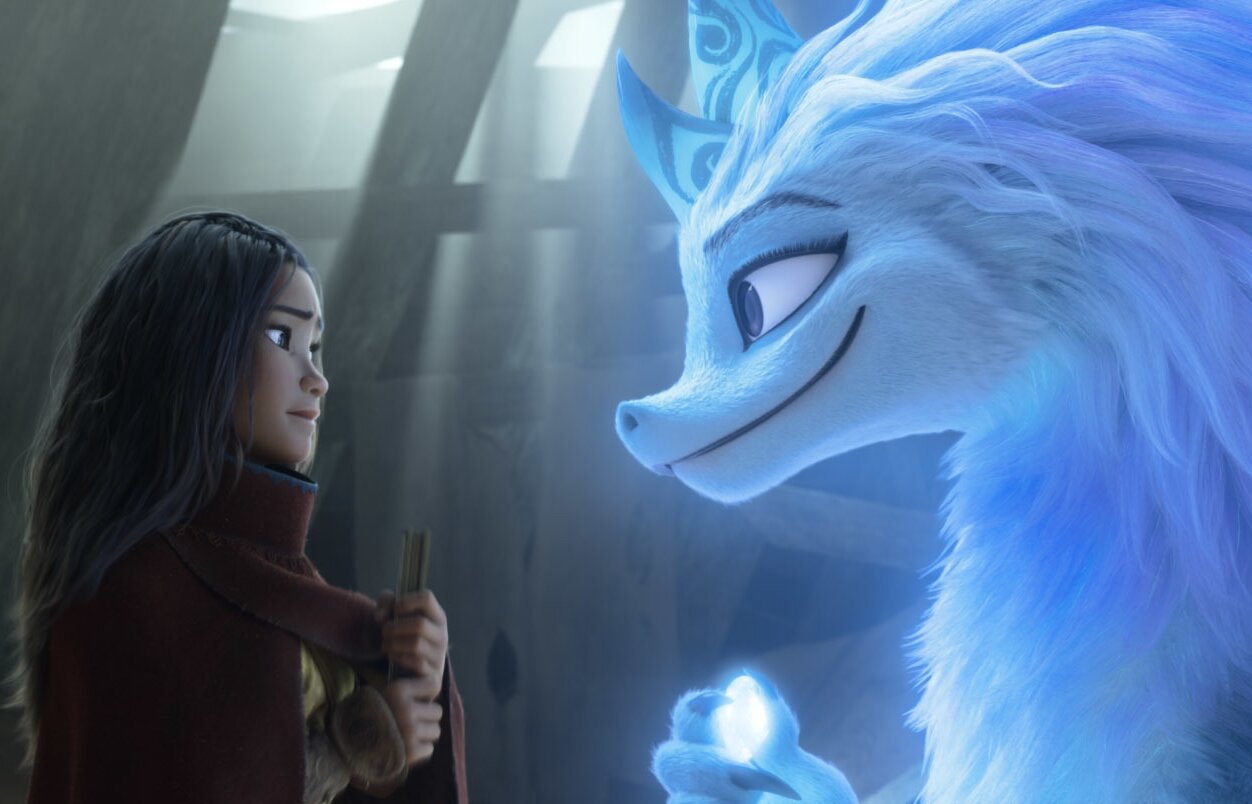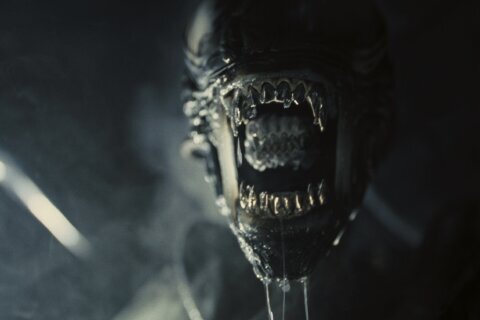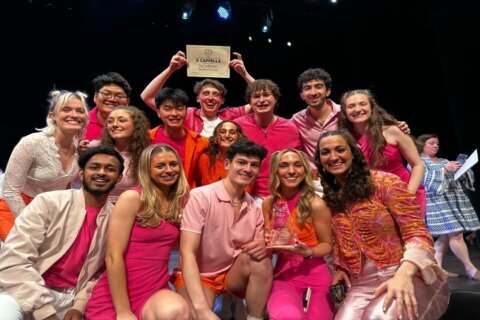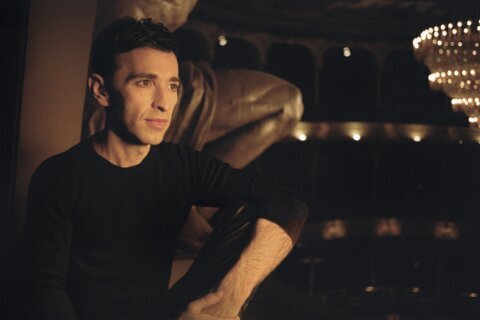
When Disney wishes upon a streaming star, it makes no difference where theaters are.
“Raya and the Last Dragon” opens theatrically on Friday and on Disney+ for $29.99, which might sound steep but is cheaper than bringing a family of four to the multiplex.
It’s absolutely worth the price of admission, combining dazzling digital animation, strong characters and timely themes of pandemic loss and political reconciliation.
We open with the backstory of the ancient world of Kumandra, where humans and dragons once coexisted. Sadly, the dragons sacrificed themselves to save humanity from a monstrous plague known as the Druun. When the Druun return 500 years later, a young warrior named Raya must save the world by unleashing the last dragon.
Disney has taken major feminist strides since Snow White, Cinderella and Sleeping Beauty. It evolved into Ariel, Belle and Jasmine, who had guts even if they were still tethered to princes. The first real warriors were Pocahontas and Mulan, but only recently did they became truly independent with “Brave,” “Frozen” and “Moana.”
Raya doesn’t even have a love interest, nor does she need one. The man in her life is her beloved father Benja (Daniel Dae Kim), who trains her both in physical battle and political peacekeeping. Kids everywhere can look up to the fiercely optimistic Raya, the first Southeast Asian Disney princess, voiced by Kelly Marie Tran (“The Last Jedi”).
In Disney tradition, she gets a cute animal sidekick in Tuk Tuk (Alan Tudyk), a rolling mix of armadillo and pill bug. If he’s like Abu in “Aladdin,” the equivalent of The Genie is the water dragon Sisu, who is released not from a lamp but a magical gemstone, swirling into the air as a blue entity who can also take the form of human disguises.
It’s impossible to replace the improvisational genius of Robin Williams, but “Raya” comes close with Awkwafina, who’s become one of our funniest screen personas in recent years. If parents enjoy her in “Raya,” they should check out her emotional indie role in “The Farewell” (2019), which won her the Golden Globe for Best Actress.
Awkwafina’s dragon isn’t menacing like “Game of Thrones” (2011); it’s more adorable like Toothless in “How to Train Your Dragon” (2010). The animators admirably make her different from previous screen dragons, resembling a My Little Pony unicorn, but instead of wings, she jumps on water puddles forming from raindrops in mid-air.
We meet additional characters as we travel the five lands named after dragon body parts. Heart is led by Raya, Talon is led by toddler con artist Little Noi (Thalia Tran); Spine is led by gruff giant Tong (Benedict Wong); Tail is led by young boat captain Boun (Izaac Wang); and Fang is led by the controlling queen Virana (Sandra Oh).
Her daughter Namaari (Gemma Chan) becomes Raya’s chief antagonist, sporting a buzz cut on the sides of her head as a no-nonsense warrior who’s deadly with a bow and arrow. Thankfully, she isn’t a cookie-cutter villain, but rather a conflicted soul who gazes at the dragons in wonder but can’t muster the courage to trust other tribes.
While I’ll always miss the classic look of hand-drawn animation, I’ve grown accustomed to computer-generated characters in the span of Pixar’s “Toy Story” (1995) to Disney’s “Moana” (2016). Unlike the latter, “Raya” isn’t a musical, but composer James Newton Howard lends epic music to digital battles to rival any Street Fighter video game.
It’s all directed by Carlos López Estrada (“Blindspotting”) and Don Hall (“Big Hero 6”), the former set to direct a live-action remake of Disney’s “Robin Hood.” Together, they create dynamic shots rare for animated films. At one point, we see a close-up of two faces reflected in a sword blade, the camera “racking focus” from one to the other.
More importantly, the visuals carry a deep thematic weight. Sweeping the countryside like “Lost” smoke monsters, the Druun turn every living being in their path to stone. Not only does it recall Thanos’ genocidal snap in “Avengers: Infinity War” (2018), it’s a heartbreaking allegory for the 500,000+ lives we have lost to the COVID-19 pandemic.
The only way out of this plague is for brave folks to cross partisan lines and establish trust in their perceived enemies. Plenty of decent Americans share the dream of Raya’s father, bringing harmony back to our warring factions to reunite as Kumandra.









